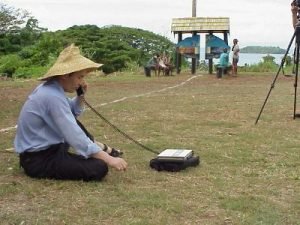Telecom Lead India: Is 4G / LTE a bleeding telecom business? Korean and Indian experience suggest so.
But American 4G / LTE operators have a different strategy to share.
South Koreans telecom operators say they make an additional ARPU of around $13 from 4G / LTE.
Bharti Airtel’s ARPU — from three Indian cities of Bangalore, Kolkata and Pune with around 20,000 users — is around $20. Airtel feels LTE ARPU will grow substantially. Airtel’s ARPU from 2G is less than $3.
Recently, Airtel chief Sunil Mittal — at the ongoing Mobile World Congress — shared his 4G roadmap and concerns on the technology and spectrum issues.
Reuters reported that South Korea, the world’s most wired country with 30 percent of its 50 million mobile users on superfast networks, has inspired many European operators ahead of their own rollout of networks based on LTE.
SK Telecom and KT Corp, #1 and #2 telecom operators in Korea, say they are struggling to make money on the technology 18 months after launch.
For instance, SK Telecom’s 2012 operating income decreased 23.3 percent due to factors including increases in LTE marketing expenses driven by rapid growth of LTE subscribers and investment costs to upgrade networks to accommodate surging data traffic.
Capex of SK Telecom for 2012 was KRW 2.858 trillion, representing a 25.5 percent rise compared to that of the year 2011.
The total number of SK Telecom’s LTE subscribers reached 7.53 million in 2012.
“Our European colleagues complain that the explosion in data has not fully happened for them, that it did not come to reality,” said Suk-Chae Lee, head of KT Corp.
“In Korea, they are data crazy. We have unprecedented demand. We cannot handle it. But the issue we have is that they are not willing to pay enough. So, the fundamental problem is, can we make any money out of it?,” Lee added.
SK Telecom’s net income for the year 2012 decreased 29.5 percent to KRW 1.116 trillion. SK Telecom’s revenue increased 2.3 percent thanks to LTE and enterprise business.
SK Telecom CTO Jae W Byun said: “The traffic increases but the revenue does not necessarily follow. We have seen about a $13 increase in average revenue per user compared with 3G. So, it is good money but it may not be enough to justify the huge investment needed in LTE.”
European operators, weighed down by regulation, competition and economic woes, are betting that the billions of dollars investment needed for 4G networks will eventually be offset by an increase in customer prices.
Customers to both firms, on average, consume 1.8-1.9 gigabytes of data per month, with users spending hours watching video on YouTube, browsing the web and social networking on smartphones and tablets.
According to research from Cisco, an average smartphone user on slower 3G networks consumes around 342 megabytes. South Korea’s leap to 1.8 gigabytes followed an 80 percent jump in mobile data traffic on 2G, 3G and 4G networks in 2012.
American 4G operators have a different picture to share.
According to Analysys Mason, LTE represents an opportunity for operators to increase revenue by pricing the new service at a premium. However, the successful LTE operators in the USA are not following that strategy: continued traffic growth from additional usage and multiple devices is encouraging users towards more expensive plans, which is resulting in consistently increasing ARPU.
US operators are attracting subscribers to their LTE networks by rapidly building out their networks and by not charging a premium for the service. However, this does not mean that the networks are all successful or that the operators are all following the same strategies.
The US has the most competitive 4G market in the world, with five operational LTE networks as of December 2012 spanning multiple business models including low-cost, prepaid and high-speed premium services.
MetroPCS Wireless and Verizon Wireless launched LTE services during the fourth quarter of 2010, both moving from CDMA-based 3G networks that were increasingly uncompetitive against AT&T and T-Mobile’s HSPA+ networks and the WiMAX network operated by Sprint partner Clearwire. LTE, HSPA+ and WiMAX are all marketed as ‘4G’ services in the USA by their respective operators.
Baburajan K
editor@telecomlead.com

